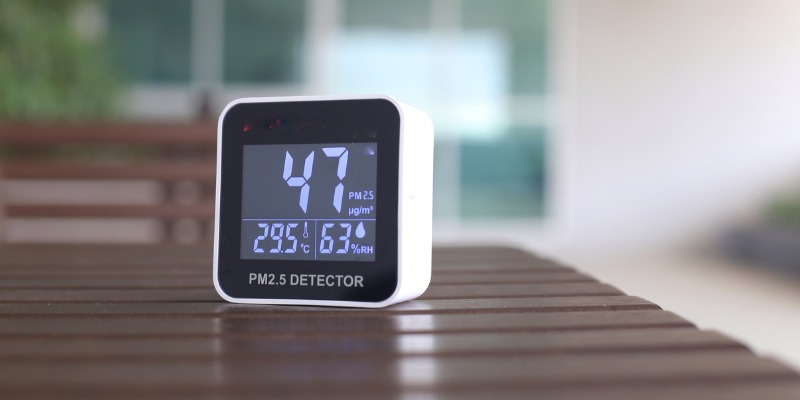
Indoor air quality refers to the purity of the air within an interior space. Ensuring a building has good indoor air quality promotes the health, comfort and wellbeing of those living and working within it.
In this article, we explain what to consider when monitoring and purifying your indoor air.
How to Test Indoor Air Quality
If you take a deep inhale and smell something funky, chances are there are pollutants in the air. Similarly, if the air appears hazy, smokey or dusty, you’ve effectively detected particulate matter with your own eyes. But what about the stuff your five senses can’t detect?
That’s when an indoor air quality monitor comes in handy. These devices come with a range of features and can also accommodate a variety of budgets.
What Causes Poor Air Quality?
One of the key causes of poor air quality is insufficient ventilation. Some homes, apartments and suites are not built with venting throughout. For example, older homes with radiators instead of forced air HVAC systems won’t even have ventilation ducts. Without a sufficient flow of fresh outdoor air, indoor contaminants can build up and cause harmful side effects.
In addition to poor ventilation, high humidity is also a key culprit when it comes to poor air quality. In humid environments, mould, mildew and other types of fungus grow rapidly, causing allergic reactions and even illnesses.
How to Improve Indoor Air Quality
With the previous section in mind, you now know that reducing humidity and promoting better air circulation in a building can do a world of good for indoor air quality. That said, you may need to take further steps to clean your indoor air.
One thing you can do is change out furnace filters and use fans in the home to move air around. If the weather permits, it’s also a good idea to open the windows periodically.
Most importantly, though, using an air purifier and dehumidifier will have the greatest impact on your indoor air quality. These devices filter out air contaminants and moisture, effectively circulating fresh, dry air throughout an indoor space.
Looking to improve the indoor air quality of your home? Reach out to our team today and we would be happy to help!
Indoor Air Quality Inspection Checklist
A premium air quality monitor should be able to detect the following types of contaminants:
- Volatile organic compounds (VOCs)
- Combustion products
- Carbon monoxide
- Carbon dioxide
- Ozone
- Radon
- Dust particles
- Mould spores
- Excessive moisture
If you’re looking to purchase an air purifier, you should check that it can purify these common air-borne pollutants:
- Mould spores
- Dust
- Pollen
- Pet dander
- Bacteria
- Certain viruses
If you’re going to start using an air purifier, most experts recommend you invest in a high-efficiency particulate air filter or a HEPA filter for short. These filters can remove particles larger than 0.3 microns from the air. Please note that there are currently no air filters available that can remove gaseous pollutants such as carbon monoxide and VOCs.
Reach Out to the Experts
At Dows ClimateCare, our team of ventilation specialists will be able to help you get the indoor air quality you deserve. With extensive industry knowledge and a collection of premium appliances, Dows makes sure our customers get to enjoy their homes to the fullest. Contact us today to learn more about our services.





